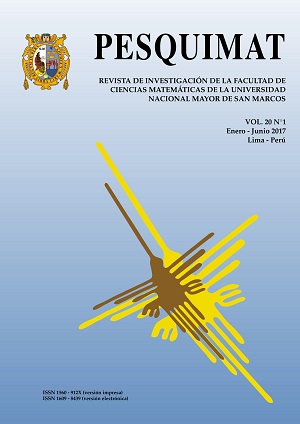Fourier Transform To Explain The Process Of Computed Tomography
DOI:
https://doi.org/10.15381/pes.v20i1.13751Keywords:
Computed tomography, Fourier transformation, inverse problemAbstract
Computed tomography (CT) is a breakthrough technology used in medicine for diagnostic diseases. The same technique is used in other areas, such as aerospace chemistry, Radio astronomy, etc. The main objective of the CT is to reconstruct the internal part of an object without having to open it as a non-destructive test. To achieve this purpose, the CT uses the attention that X-rays undergo through this object with the information, the inner part of the object is reconstructed, that is to say the CT is an inverse problem.
In this article uses the Fourier transform for the reconstruction of the internal part, for it is directly part of a continuous model, representing the density at the point (x, y) of a section, with a function p = p(x, y); and even though p is not required to be continuous, the Fourier method is more efficient and a better, more regular result is obtained p.
Downloads
Published
Issue
Section
License
Copyright (c) 2017 Edwin Chávez Ramírez, Efraín Carbajal Peña, Victoriano Yauri Luque, Cristian Amador Loli Prudencio

This work is licensed under a Creative Commons Attribution-NonCommercial-ShareAlike 4.0 International License.
THE AUTHORS RETAIN THEIR RIGHTS:
a) The authors retain their trademark and patent rights, and also on any process or procedure described in the article.
b) The authors retain the right to share, copy, distribute, execute and publicly communicate the article published in Pesquimat magazine (for example, place it in an institutional repository or publish it in a book), with recognition of its initial publication in the Pesquimat magazine.
c) The authors retain the right to make a later publication of their work, to use the article or any part of it (for example: a compilation of their works, notes for conferences, thesis, or for a book), provided that they indicate the source of publication (authors of the work, magazine, volume, number and date).






